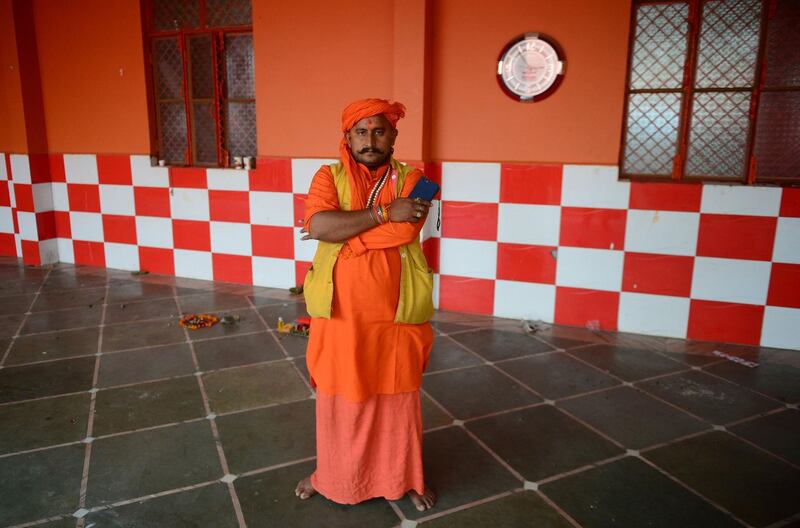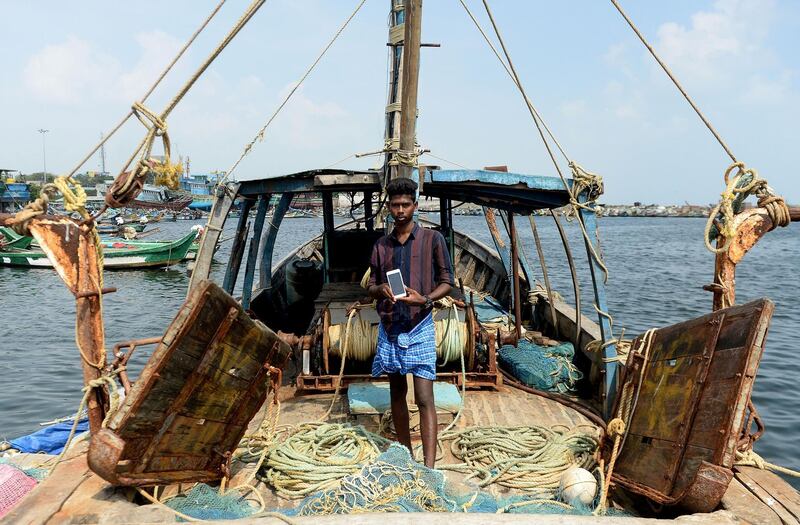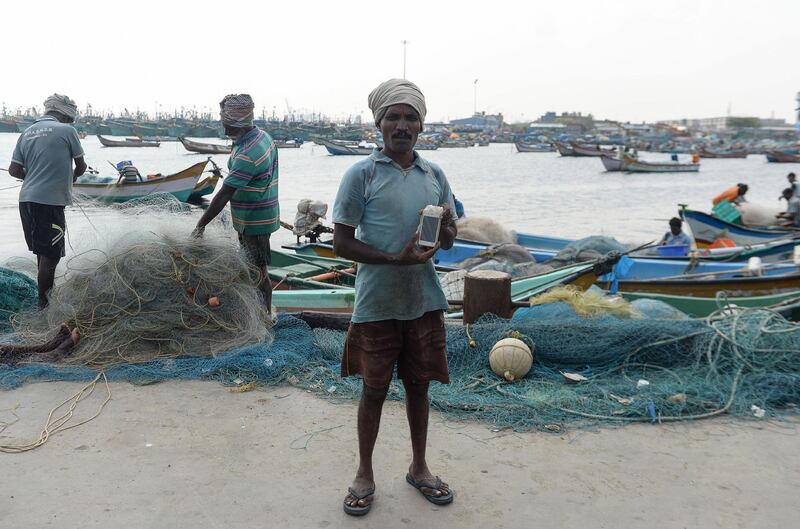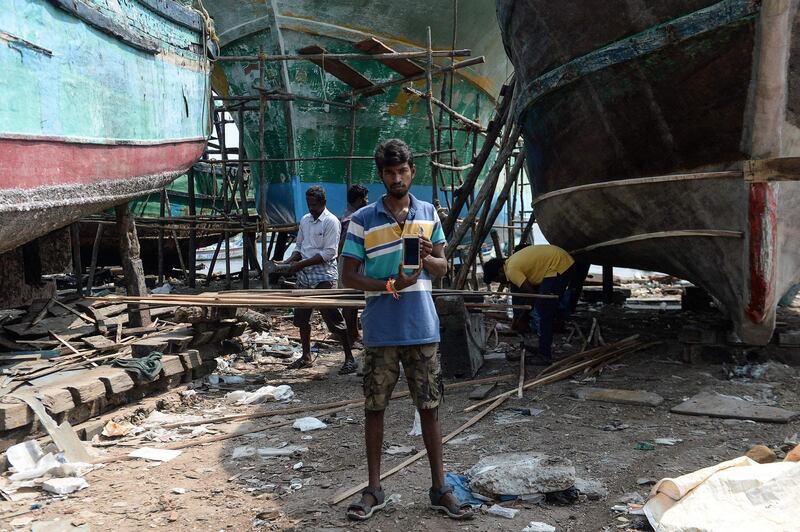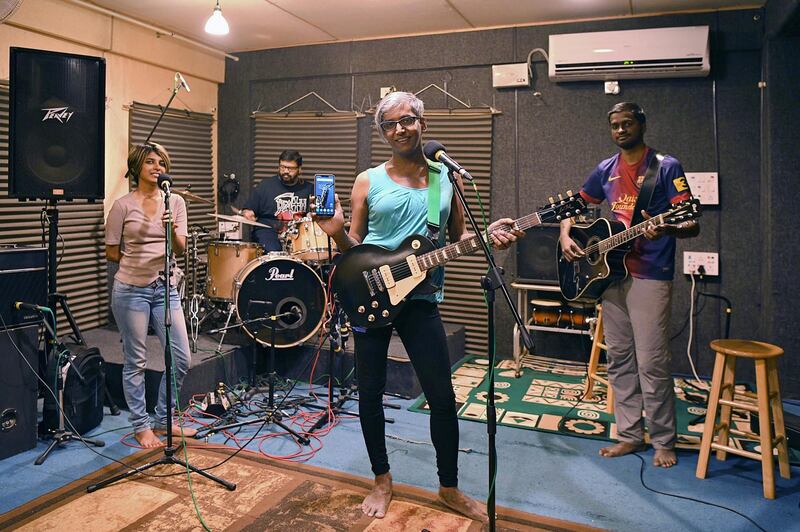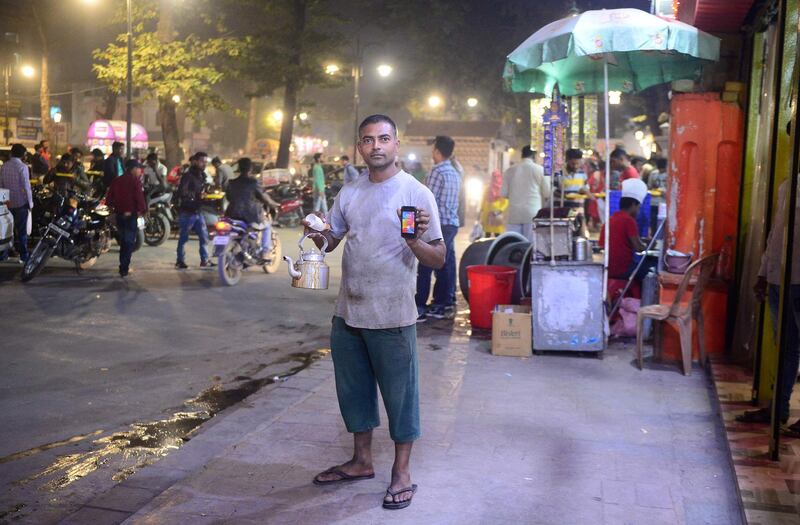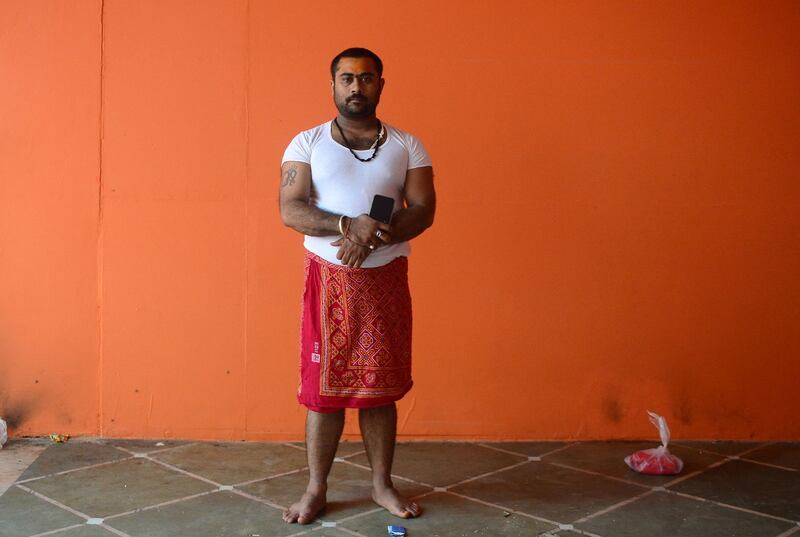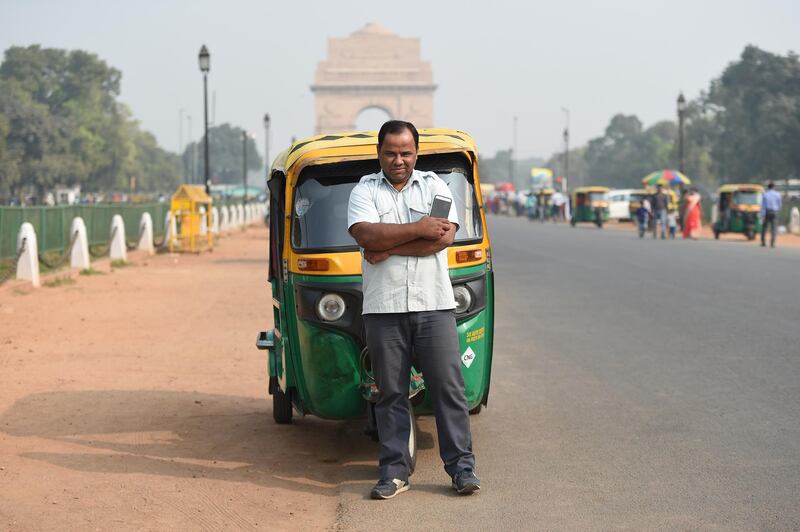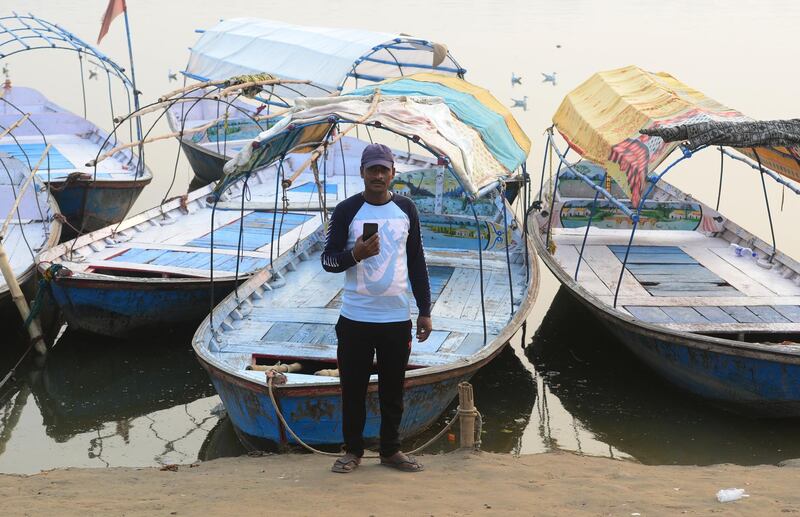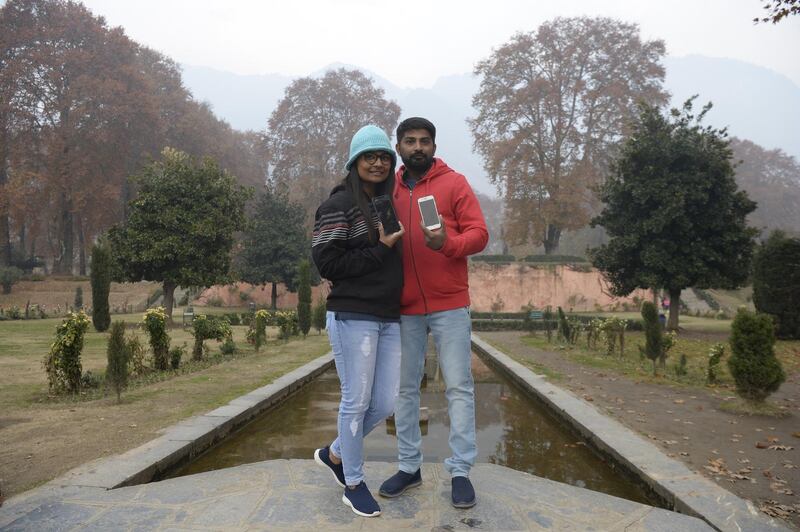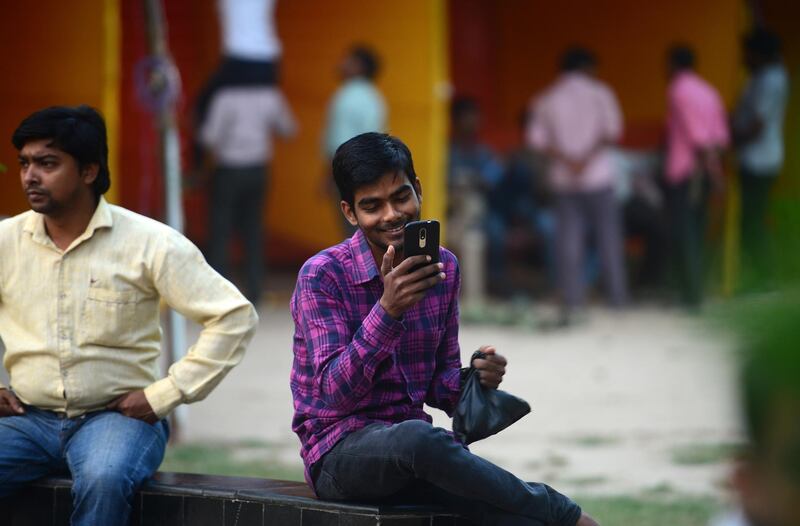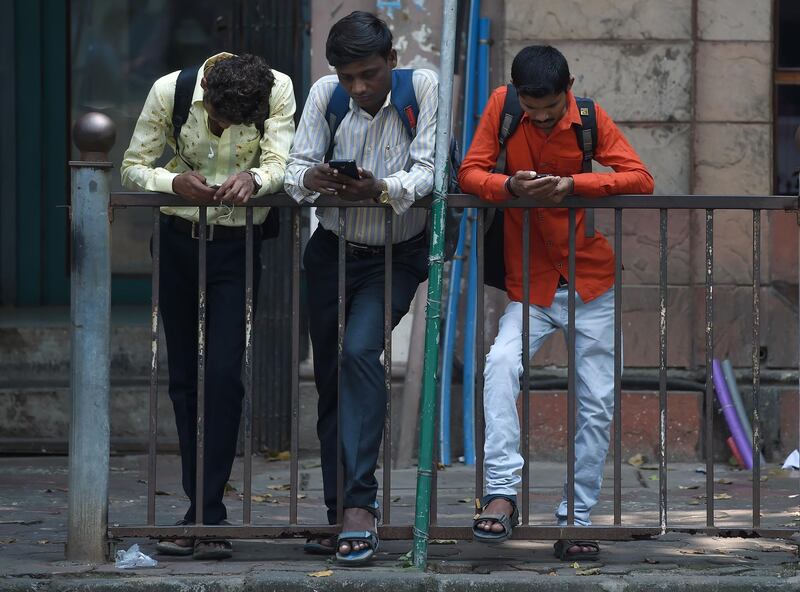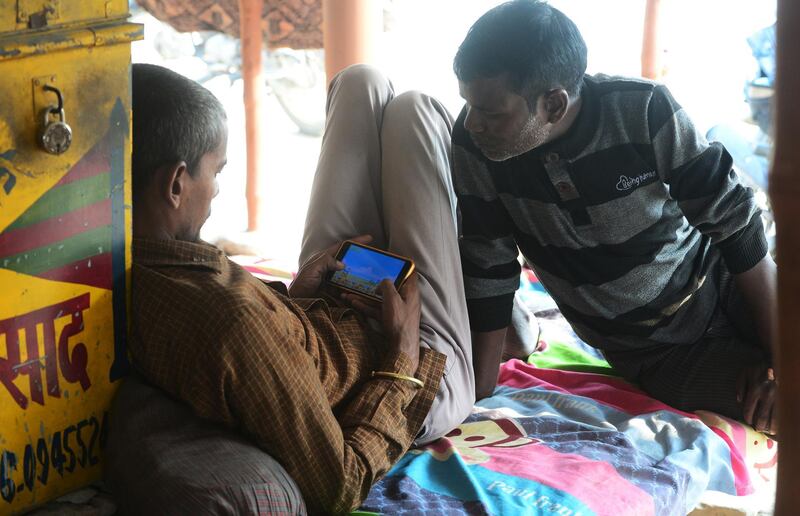Imagine what it must be like, if you have spent your entire life in a rural Indian village, to see a smartphone for the first time. To watch as this small device responds to your every command. You want to see the Taj Mahal? Sure, here it is. How about contacting a relative many miles away and seeing their face right there in front of you? No problem. This shiny little screen provides the gateway to all the things you have heard about – and many you haven’t, too. It would seem like magic.
Such has been the experience of hundreds of millions of Indians in the past few years. You can buy a brand-new smartphone in India for as little as $46 (Dh168), and data is cheap, which means a significant proportion of India’s poor can now access the internet for the first time. The numbers are extraordinary. In 2000, only 20 million Indians – or two per cent of the population – were online. That number had increased to 100 million by 2010, but 1.1 billion Indians were still offline.
By 2017, however, 462 million Indians – or 35 per cent of the population – had discovered the internet, and projections suggest that nearly a billion Indians will be online by 2025. This is nearly all down to the smartphone.
'The West’s evolution is India’s revolution'
Things happened more gradually in the West. In the late 1990s, if you had a personal computer, a telephone and a dial-up connection, you could probably send an email, search Google, and maybe even visit some rudimentary, grainy-looking websites.
With the arrival of broadband and then wireless, connection speeds increased. Online businesses were launched, music and films were shared for free, blogs started appearing, pornography became widely available, and a river of information (and disinformation) burst its banks. Then in 2004, Facebook arrived, followed by YouTube in 2005 and Twitter in 2006.
By the time the smartphone became ubiquitous in the West, around the mid-2000s, providing near unrestricted internet access for people all of the time, even on the move, most of us were already online. We had discovered the internet – its power, its flaws, and its dangers – incrementally. We were learning as we went along.
As Ravi Agrawal, author of India Connected: How the Smartphone is Transforming the World's Largest Democracy, says: "The West's evolution is India's revolution … The smartphone is giving Indians the internet, which was not going to happen otherwise, as well as cameras and MP3 players. That is transformative."
Agrawal, managing editor of Foreign Policy and CNN's former India bureau chief, compares the smartphone revolution in India to the arrival of cars in America in the 20th century. "The car led to Americans building roads and the interstate system. It created tens of thousands of jobs," he says. "And then culturally, there is the notion of the car as [a symbol of] freedom. It is the motif of the American dream.
“This book asks whether the smartphone will create a similar infrastructure – real and imagined – in India. Will it end up being the motif for the Indian dream? And will that be a good or a bad thing?”
Looking at the good
In fact, many of the positives (access to education; empowerment of women), as well as the myriad challenges (mental health problems; data leaks), ushered in by India’s smartphone revolution are the same as those experienced in other parts of the world. But the pace of change has been so accelerated in India that the consequences are intensified, too.
Take, for example, the impact of the smartphone on job creation in the country. Agrawal explains that India needs to create between 12 and 15 million jobs a year in order to keep up with population growth. E-commerce, often maligned in the West for destroying traditional shops, might actually provide the remedy in India.
“As the market expands, almost exponentially as Indians start to trust buying stuff online, look at the jobs that will be created,” the author says. “Warehousing, packing, delivery: those types of jobs fit exactly the skill profile of the millions of Indians who are entering the workforce.” Ride-hailing apps, such as Uber and Ola, and food-delivery apps, such as Zomato and Foodpanda, are having a similar impact on the transport and restaurant industries. “For better or worse,” writes Agrawal, “smartphones could well hold the future of Indian work.”
Or how about education for women? As Osama Manzar, founder of India's Digital Empowerment Foundation, says: "In India, as soon as you are connected on the internet, you leapfrog from being illiterate to educated. Yesterday they were not connected; now they are consuming, and at par with educated people. If you and I are both connected, you are not going to ask for my caste. The internet in India makes people equal."
Dealing with the bad
On the flip side, though, look at fake news. It is a virus, spread online, which has infected almost every society with access to the internet. But Indians are particularly susceptible to it. "New users, who discover a rudimentary version of computing on their mobiles, have no prior experience with Photoshop, for example, or doctored videos," Agrawal writes.
Combine this ignorance with access to social media and an online messaging service such as WhatsApp, both of which allow fake news to be disseminated to large numbers of people in an instant, and the results can be tragic. In 2015, a Muslim man was beaten to death in India for allegedly storing beef in his kitchen after images – later shown to be fake – were shared via WhatsApp.
Part of the problem is that most Indians have never experienced email. As Agrawal explains, in the West, we soon realised that "spam" emails – "If you don't forward this email to seven of your closest friends, you will never be lucky in love" – were best deleted. Many of the 220 million Indians on WhatsApp are ill-prepared to pick out the flotsam of truth in the tidal wave of fake news. "There's simply no radar for detecting [nonsense]," says Pratik Sinha, founder of fake news-detecting website, AltNews.in.
India, of course, is not the only country going through this technological transformation. Many countries in Africa are, too. But Agrawal believes that the situation in India is unique. “No other part of the world is as divided along lines of urban/rural, upper class/lower class, male/female,” he says. “Language is also a big deal. Only 200 million Indians speak English, which leaves 1.2 billion who don’t.”
'The more rural you go, the stronger the sense of magic'
Traditionally, those who speak English are significantly more likely to land white-collar jobs. That’s changing, though. “The smartphone is making it easier to learn English,” says Agrawal. “And the multilingual touchpad and voice technology is democratising society in a way that was impossible even four year ago.”
And then there are things such as online dating, the effect of which has been particularly striking in India where, according to the 2012 India Human Development Survey, 73 per cent of women had their spouses picked for them. "Normal interactions with the opposite sex are frowned upon in many parts of India," the author explains. "Dating apps allow [these interactions]. Indians are learning how to date on a smartphone."
As ever, though, this progress is fraught with danger. In 2017, it was revealed by the Hindustan Times that shopkeepers in mobile recharge stores were storing women's numbers, ranking these women on their looks, and then selling on the information.
The most fascinating passages in India Connected come when Agrawal travels into rural parts of India and encounters those villagers, described earlier, who have learnt to speak to Google in Hindi, say, or Bengali, allowing those who are illiterate to access information – everything from political news to recipes – from which they were previously excluded. "The more rural you go, the stronger the sense of magic," says Agrawal.
_________________
Read more:
Survey reveals UAE is a 'zombie nation' of smartphone users
Switch mobiles off at 10pm to improve happiness, study says
UAE's high child obesity rates blamed on technology
Research shows human brains cannot handle texting and driving
_________________
But does this mean that there is a risk – if that is even the right word – that traditional Indian culture will be lost as a new generation grow up consuming Western ideas? “I walked into this [project] thinking that the internet equals Westernisation,” says Agrawal. “It doesn’t. It may actually reinforce Indian culture. There are astrology apps and Hindu [prayer] apps … The Indian internet is like an extension of Indian television.”
By way of an illustration, Agrawal explains how millions of Indians forward the words “Good Morning” on WhatsApp to all of their contacts each day. Not, perhaps, the most radical consequence of Indian society’s relationship with the smartphone, but indicative nevertheless of how Indians are shaping tech in their own way. “It’s such an Indian way of thinking about the internet, ‘Oh, I woke up, let me say “Good Morning” to 500 people.’ I didn’t expect that.
“India is constantly defining and redefining itself and the internet will accelerate some parts of that,” he continues. “India will find a way to be India.”
India Connected: How the Smartphone is Transforming the World’s Largest Democracy, published by Oxford University Press, is out now
